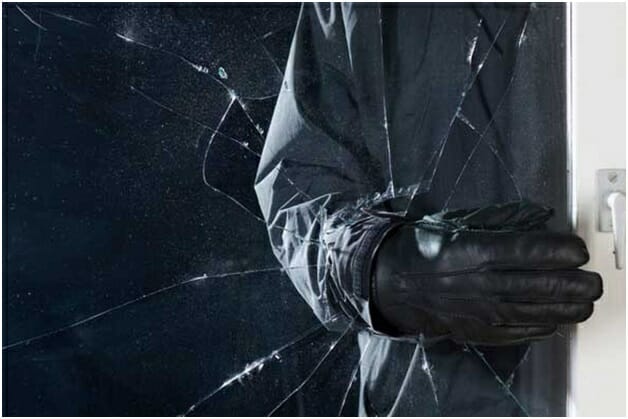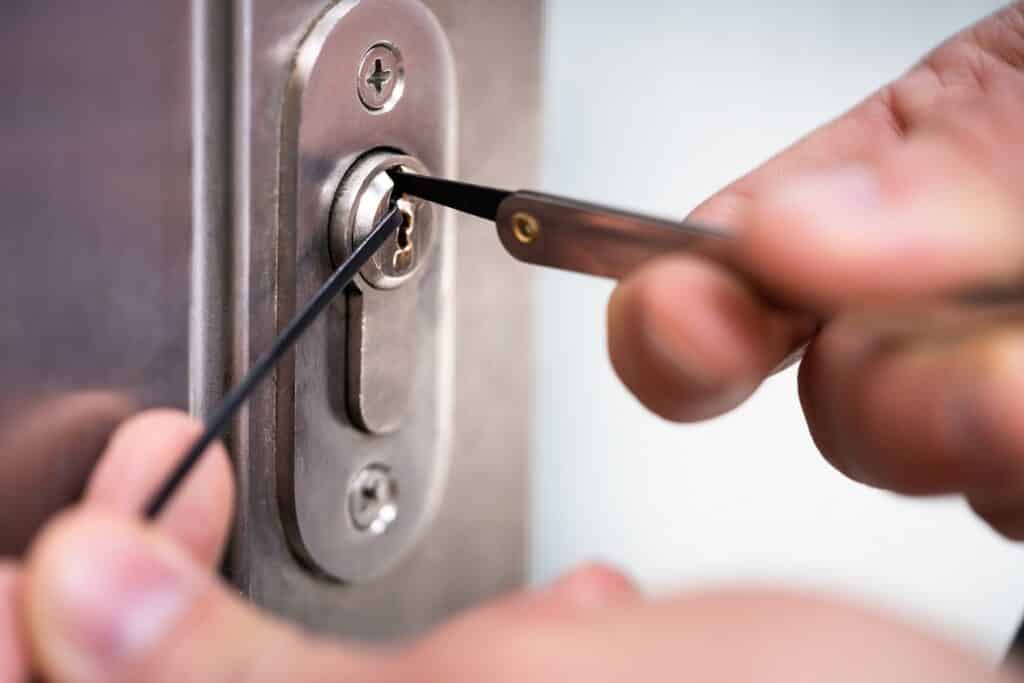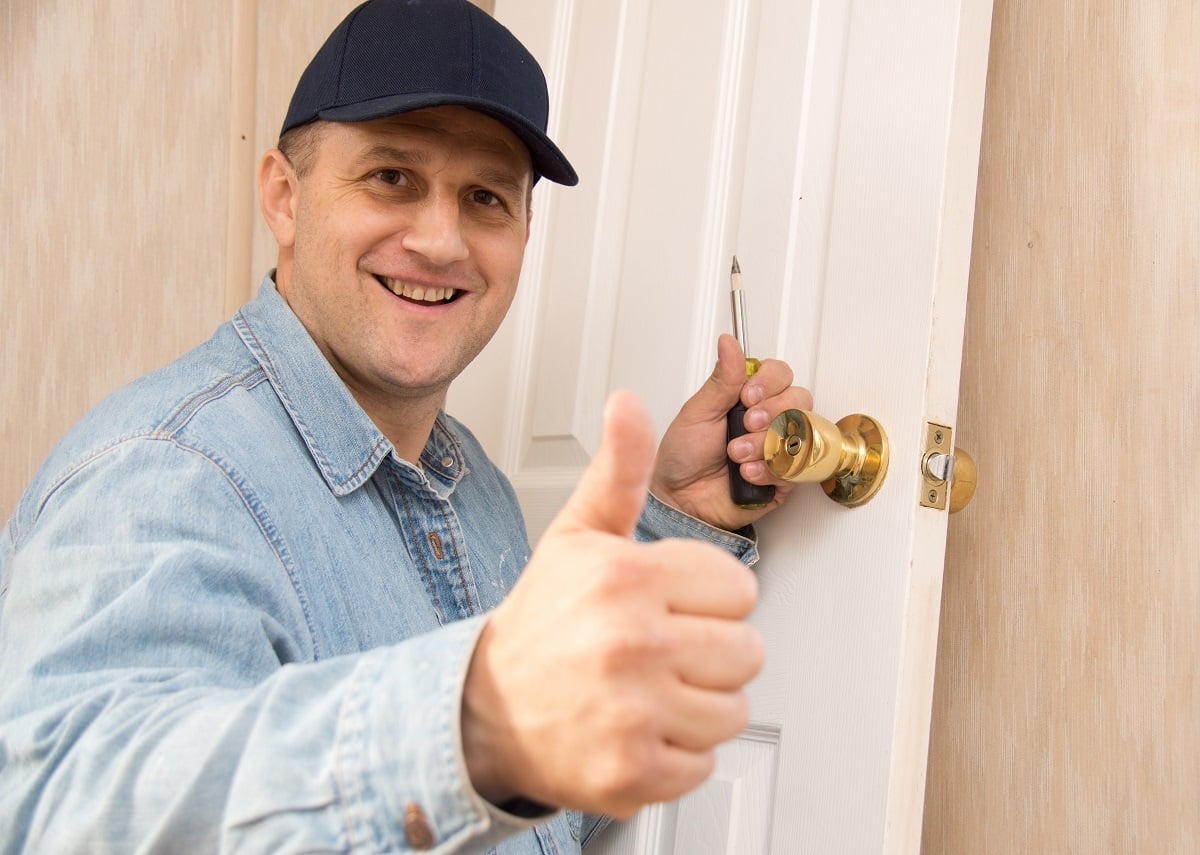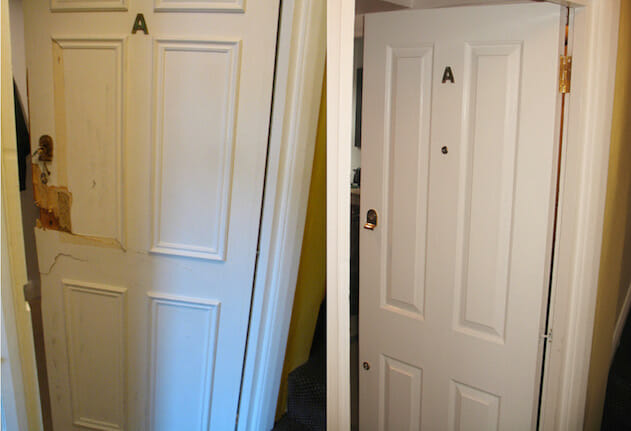 5 Ways Burglars Can Get Access to Your Home
5 Ways Burglars Can Get Access to Your Home

Has your home ever been burgled? If yes, do you think there’s a chance you made the burglar’s job easier than it could have been? It’s possible that due to negligence or small oversights on your part, your home seemed attractive to a burglar and they chose it as a target.
Reality is not like the movies, where burglars hatch grand schemes and dodge lasers to get into a building. The average burglar is quite lazy and not willing to put too much effort into breaking into a home. This means that if a property has effective security measures in place, the average burglar will walk away and try their luck with a less well-guarded home.
In fact, most burglars will not break into a home if they believe someone is around. They will avoid confrontation, if possible.
To help you minimise the chances of your home being broken into, we will look at the points of entry burglars commonly use to get into homes. We will also be looking at how you can effectively secure these entry points.
Where is your home the most vulnerable?
Performing a quick security check on your home right now could well reveal security breaches. This can include unlocked door leading outside, multiple unlocked windows, inadequate locks on certain entrances, and foliage hiding your home from street view. Believe it or not, even though you likely never took any of these mentioned flaws seriously, a potential burglar who has scouted your home has noted them for future use.
As unbelievable as it may sound, the most common point of entry and exit that burglars use is the front door. They just step over the welcome mat and walk right in. And you’d be surprised how many of these cases the burglar actually found the front door unlocked.
After the front door, the next most commonly used point of entry is a first floor window. This is followed closely by the back door. Many homeowners do add extra security to their front doors but, for some reason, neglect equally securing their backdoors. This is a problem because the backdoor is especially vulnerable since it is concealed from public view, unlike the front door, thus making it a prime target for burglars. There is no reason your backdoor should not be as heavily locked and secured as your front door.
And finally, the garage door is the next most vulnerable spot commonly targeted by burglars.
These are the most commonly exploited weak spots of a home, but there are others too. Your typical burglar will take the most obvious vulnerability presented to them, especially one that is concealed and will hide their break-in.
A burglar wants to get in and out of your house as fast possible. The more difficult it is for a burglar to get in, the longer it will take and the noisier it will be. These are not conditions a burglar wants and this will lead the burglar to abandon your home for easier pickings.
How Do Burglars Select Their Targets?
Before a burglar attempts to break into your home, they will normally have scouted and surveyed your property once or twice before. This means the burglar already has some knowledge of your habits, schedule, as well as what security measures you have in place.
During this surveillance stage of planning a burglary, the burglar will typically look out for the following:
- When cars come and go.
- Your daily routine or weekly schedule.
- Signs that someone is home or if the house is empty (perhaps inhabitants are away on holiday).
- Is there a dog? A dog is a big deterrent for burglars. Barking will draw attention and the dog may also attack.
- Presence of security signs on the building, such as CCTV or alarm systems.
- Is the house concealed from street view by foliage or a fence? Does it have security lighting? Are entry points well lit?
These are all primary factors a burglar will take into consideration before attempting to break into a home. Remember that the easier a target is, the more attractive a burglar will find it.

How Burglars Get Access into Your Home
After a burglar has done their homework and has deemed a property worth breaking into, the next step is actually getting in. Let’s now look at the common ways a burglar will accomplish this.
1. The Front Door
If you think a burglar wouldn’t have the nerve to walk into your home right through the front door, you are wrong. Many thieves can’t ignore the allure of the front door, which is why it is the most commonly-used point of ingress for break-ins.
One particular reason burglars attempt the front door is because they know many homeowners leave spare keys hidden about. And, if there are no hidden keys, and your front door lock is weak, the burglar can still walk right up and kick your front door open, pick the lock, or easily remove it from the hinges.
There are also countless instances of homeowners who accidentally left the front door unlocked and the burglar strolled in.
To protect your home against burglary always use good quality doors and locks. Make sure your door is in appropriate condition too. If your door is not a solid one or it is in a bad condition consider the service of a locksmith for a new door installation.
2. Secondary Doors
Your front door isn’t the only attractive point of entry. Less brazen burglars will typically abandon your front door for secondary doors, such as your back door, skylight, garage door, or a side door. A burglar will also opt for secondary doors if your front door’s locks are too solid. As long as it is a door that leads into your home, it should be reinforced with locks just as strongly as your front door—and always locked.
3. Windows
The average home has more windows than doors and windows are generally more fragile than doors. This makes them ideal for a forced entry, especially if the window has no bars or other attached security feature.
If you think a burglar is averse to the sound of breaking glass because it might attract a neighbour, you are overestimating your neighbours. A burglar will sometimes take the risk of people hearing shattering glass during the day, knowing that there is a good chance that a single instance of shattering glass will be ignored. It depends on the neighbourhood, other environmental noise, and so on. The burglar might not even have to break any glass either, as most people are guilty of leaving one or two windows open or unlatched during the summer months. Sometimes the window might be latched but the lock is weak and gives way under a bit of force.
4. Pet doors
If your dog or cat has a special entrance, it’s possible a burglar will utilise the entry point. If they can’t physically fit through they may be able to use a tool to reach doors or windows and unlock them. Keep pet doors secure.
5. Climbable Trees or Tables
It’s nice to have some trees around your home to offer shade on hot days, or even to build a tree house. But if a tree is too close to your home, it can be a security risk. For one, thick foliage can shield a burglar from street view or neighbours as they break into your home. Also, tall trees or walls around gardens can be climbed to access windows that are open upstairs.
Outdoor furniture like tables may also be used to scale your building and access second-storey windows that are unlocked.
Bear in mind that all a burglar needs for a good day is one unlocked window or door into your home. This window or door could lead into your basement or attic; it doesn’t matter as long as a burglar can use it to get in.
To help you make it a bit harder for burglars let’s look at measures you can implement to optimise home security.
How to Block the Access Points of Burglars into Your Home
Your home is vulnerable to a break-in whether you are home or not. But, truth be told, you are more prone to a break-in if no one is home. That said, below are effective ways to optimise your home’s security and minimise the chances of being burglarised no matter if you are in or not.
1. Lock Your Doors
Not just your front door, but all doors that give access into your home should be securely locked. The locks on all your doors should be of high quality, preferably locks that use a Grade 1 deadbolt mechanism. Never compromise the security of your home by opting for a cheap and low-quality lock for any door that leads into your home, this includes the front door, back door, side door, garage door, or any other doors you have.
It’s not just about having a solid lock on your doors. The locks are pointless if you don’t use them, so be sure to lock up all doors when heading out and before going to bed. You can further ensure security by installing a door with a solid wood core or metal doors as these are more difficult to kick down or smash through.
Here are some more ways to increase your front door security.
2. Invest in Security Glass/Laminated Glass
Windows are commonly targeted because of their fragility. If you take away that fragility, your windows become less attractive to burglars. You can boost the security of your windows by replacing your regular glass panes with security glass such as laminated glass. This type of glass is much tougher to break, and it will definitely draw attention when a burglar spends a considerable amount of time trying to smash through.
You can also add bars to your windows for added security, but obviously this is more for side windows that are not part of the facade of the home.
3. Add Tough Locks to Your Windows
Many people don’t pay attention to the types of latches they have on their windows. This can be an expensive mistake. Invest in quality window locks or latches that will give a burglar a tough time. But, just like door locks, it’s not just about installing a tough lock model, you must make sure you use them.
4. Ditch The “Hide-A-Key”
Hiding a spare key around your home can be a lifesaver if you are locked out, but it is also a huge security risk. The risk is more apparent when you consider the fact that a burglar expects you to have a hidden key they can use. For security reasons, it is best not to have a hidden key. Instead, opt for a smart lock that doesn’t necessarily require a physical key.
5. Keep Your Home Looking Occupied
As mentioned earlier, burglars are more interested in empty homes. If you and the other inhabitants of your home head out on a long trip, this means your property will be more of a potential target. But, if you can make it seem like someone is home, a potential burglar will have second thoughts.
To make it seem like someone is home, ensure mail isn’t piling up in front of your door or at your mailbox. Perhaps have a neighbour pick up your mail until your return. Also, instead of leaving your home dark, leave certain lights on in and around the house. If you have a smart security system, you can control your lights remotely from anywhere you are.
6. Don’t Overly Conceal Your House
A fence can be a double edged sword. It may serve as a deterrent, but once a burglar gets over it, the fence becomes cover for the burglar. The same applies to tall hedges and trees. These can make for the perfect concealment for a burglar who doesn’t want to be seen by a passer-by or neighbours as they try to get into your home. The more open your garden the fewer places a burglar will have to hide.
Another form of concealment are dark spots around your premises at night. Prevent this by adding security lights that illuminate dark corners a trespasser can hide in. Motion sensors work very well too.
7. Plant Thorny Bushes Under Your Windows
Shrubbery can actually be useful if properly utilised. For instance, by planting thorny bushes under your windows, you will make them less attractive to possible burglars.
8. Avoid Doors with Glass Near the Handle
Having glass ports on your door may look good but they can be a security risk. This is especially so if the glass port is close to the door lock. A burglar can simply knock out the glass, reach in and open the lock. Avoid these designs as they are a green light to burglars.
9. Install a Security System
Depending on your budget and the level of security you want, there are a wide variety of security systems you can opt for. You can opt for a wired or wireless system for your doors and windows. In the event of a security breach, such as a forced entry or other unauthorised entry, an alarm system will be triggered. This alarm system may simply make a loud noise or may contact the appropriate authorities. You will tend to have to pay an upfront cost, and some companies come with a monthly fee too.
10. Get a Dog
This is an affordable, yet highly effective form of home security. A dog will sound off an alarm by barking if a stranger attempts to enter your home. Some breeds and trained dogs will go a step further by attacking a potential burglar. In fact, simply placing a “beware of dog” sign on your fence is usually an effective deterrent for burglars who’d rather not take the risk. Certain dog breeds are better suited to security than others, but just about any dog is a deterrent.
So, that’s just about all there is to know about how burglars can gain access to your home and how you can avoid becoming a break-in victim. Just remember that most burglars are opportunists. If you need a professional locksmith with the tools and expertise to effectively secure your property and minimise a burglar’s opportunities to get into your home, give us a call today.



